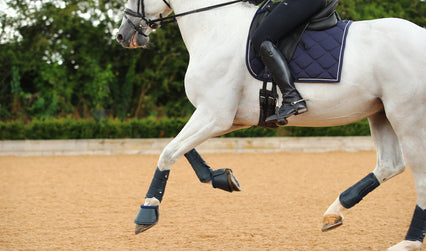Posted
When it comes to equestrian training, there is a lot more than meets the eye. It's not just about riding a horse and looking graceful; it's a complex sport that requires skill, technique, and a deep understanding of the horse's behavior. In this blog post, we will explore the science behind effective equestrian training and how it can help riders improve their performance.
How does the horse's anatomy affect training?
Understanding the horse's anatomy is crucial for effective equestrian training. Horses are powerful animals with a unique musculoskeletal system. Their long, strong legs and flexible spine allow them to move with grace and agility. By understanding the horse's anatomy, riders can tailor their training methods to enhance the horse's natural abilities and minimize the risk of injury.

What role does psychology play in equestrian training?
Psychology plays a significant role in equestrian training, both for the horse and the rider. Horses are highly sensitive animals that can pick up on their rider's emotions and intentions. By maintaining a calm and confident demeanor, riders can establish trust and build a strong bond with their horses. Additionally, understanding equine psychology can help riders anticipate and address behavioral issues, leading to more effective training sessions.

How can biomechanics improve riding performance?
Biomechanics is the study of how the body moves and functions. In equestrian training, understanding biomechanics can significantly improve riding performance. By analyzing the rider's position, balance, and alignment, trainers can identify areas for improvement and provide targeted exercises to enhance the rider's stability and effectiveness in the saddle. Additionally, applying biomechanical principles to the horse's movement can help riders optimize their horse's performance and prevent injuries.
How can technology enhance equestrian training?
Technology has revolutionized the equestrian world, offering innovative tools and techniques to enhance training. From motion sensors that analyze the horse's movement to virtual reality simulators that allow riders to practice in a controlled environment, technology provides valuable insights and opportunities for improvement. By incorporating technology into their training routines, riders can gain a competitive edge and accelerate their progress.
Another area technology can enhance equestrian training is through therapy products, such as magnets and infrared technology;helping to improve blood circulation and aid lymphatic drainage. Your horse's welfare is paramount to us here at Premier Equine. This is why we have produced a range of therapy products which boast various potential health benefits. Another example of this would be our horse ice boots or cold water boots, which can be used to help cool down tendons after strenuous exercise.

Effective equestrian training is a combination of science, skill, and dedication. By understanding the horse's anatomy, psychology, biomechanics, and nutrition, riders can optimize their training methods and achieve remarkable results. Embracing technology and staying up-to-date with the latest advancements in the field can further enhance the training experience. So, whether you're a seasoned rider or just starting, remember that there is always more to learn and explore in the world of equestrian training.


